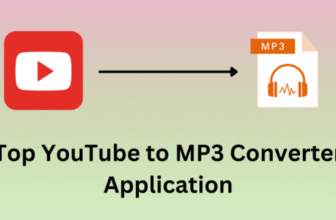
Music streaming has fundamentally transformed the way people consume music. Gone are the days when listeners had to purchase albums or singles in physical or digital form. With the rise of platforms like Spotify, Apple Music, and YouTube, consumers now have access to millions of songs at their fingertips. However, while streaming has undoubtedly made music more accessible, it has also had profound implications on music trends. The rise of streaming algorithms, playlists, and data-driven decision-making has reshaped the music industry in ways that were previously unimaginable. This raises the question: is streaming good for the music industry, or has it led to a homogenization of musical tastes?
The Power of Algorithms and Data
One of the key factors in how streaming influences music trends is the power of algorithms. Platforms like Spotify, Apple Music, and YouTube use algorithms to recommend songs to users based on their listening habits, location, and even the time of day. These algorithms are designed to keep users engaged by suggesting music they are likely to enjoy, ensuring that they spend more time on the platform and, in turn, generate more revenue for the service.
The effect of this recommendation system is profound. It has created a cycle where certain types of music are promoted more than others, often those that are already popular or fit within specific genres. For example, an artist who has achieved a certain level of success and a large following is more likely to have their songs recommended to users, which can perpetuate their popularity and ensure their dominance in streaming charts. This can limit the exposure of emerging artists who may not yet have the algorithmic backing of major platforms.
Moreover, because algorithms favor songs that have a high rate of user engagement, they tend to promote tracks that are short, catchy, and easily digestible. This has led to a trend where “singles” are more important than full albums. Artists now have to craft songs that can grab attention quickly, often focusing on hooks and choruses that can be easily consumed in a short amount of time. This shift has altered the way artists approach the creation of music, with some focusing more on “playlist-friendly” tracks rather than more experimental or complex pieces of work.
The Impact of Playlists
In addition to algorithms, curated playlists have become one of the most influential factors in determining music trends. Playlists like Spotify’s “Today’s Top Hits” or Apple Music’s “Hot Tracks” are essential for artists looking to break into the mainstream. Getting placed on a popular playlist can significantly increase an artist’s exposure, driving millions of streams in a short amount of time.
While this has been a boon for some artists, it has also created a highly competitive and sometimes exclusive environment. Independent artists or those not signed to major labels often struggle to get their music added to these playlists, as the curators typically favor tracks from well-established names or those already on the charts. This creates a cycle where the same artists dominate, and emerging talent struggles to find a foothold. In some cases, this can lead to a lack of diversity in the music being promoted on these platforms.
Furthermore, playlists can heavily influence listener preferences. The more an individual listens to a certain genre or type of music, the more the algorithms will recommend similar content. This can limit the discovery of new genres or unconventional music styles, as listeners are nudged toward familiar, popular options. In this sense, streaming can create a form of “musical monoculture,” where only a narrow range of music is highlighted, and less mainstream genres or experimental artists are relegated to the fringes.
Homogenization of Music
Another critical concern regarding the impact of streaming on music trends is the potential homogenization of music. As streaming platforms promote songs based on their popularity or user engagement, there is a tendency for music to become more formulaic. Artists are incentivized to produce music that fits the mold of what is already popular—catchy hooks, repetitive beats, and easily digestible lyrics. While this type of music may appeal to a broad audience, it can often lack the depth or complexity that characterized music in previous decades.
For example, in recent years, the rise of “lo-fi” beats and “chill” playlists has led to a surge in similar-sounding instrumental tracks. While these tracks are incredibly popular and accessible, they can feel repetitive and similar to one another. Similarly, pop music on streaming platforms has seen a rise in formulaic structures—tracks that sound similar to what has already been successful on the charts. This trend can discourage innovation and lead to a more uniform sound across genres.
The pressure to conform to streaming algorithms can also stifle an artist’s creative freedom. If an artist feels that their music will only gain traction if it fits within certain parameters—such as song length, lyrical themes, or production styles—they may be less inclined to experiment with new sounds or push boundaries. This could result in a landscape where music becomes more predictable and less diverse, making it harder for new, innovative genres to emerge.
The Role of Virality in Music Trends
Another significant aspect of how streaming influences music trends is the role of virality. Thanks to platforms like TikTok, viral trends have become a central force in shaping popular music. Songs that go viral on social media platforms often see a spike in streams, with users eager to hear the full track after hearing a snippet in a viral video. This has led to a situation where music trends are increasingly dictated by social media and meme culture, rather than organic growth or artistic merit.
While viral trends can benefit certain artists by giving them a moment in the spotlight, it can also result in the rapid oversaturation of certain songs. Songs that go viral on platforms like TikTok often reach their peak popularity quickly, only to fade just as fast. This can create a “flash-in-the-pan” culture, where songs are celebrated intensely for a short period, only to be replaced by the next viral hit. While this can be exciting for some, it may also contribute to a culture of fleeting attention, making it harder for songs to have lasting cultural significance.
Is Streaming Good for the Music Industry?
The answer to this question is not straightforward. Streaming has undoubtedly democratized access to music, making it easier than ever for consumers to discover and enjoy music from all over the world. It has also provided an avenue for artists to reach global audiences without the backing of a major label. However, it has also contributed to the consolidation of power in the hands of a few major players, such as Spotify and Apple Music, and has led to the rise of formulaic music that is optimized for streaming algorithms.
In conclusion, while streaming has opened up new possibilities for the music industry, it has also altered the way music is created, consumed, and promoted. Whether these changes are ultimately positive or negative for the music industry depends on one’s perspective. For some, the convenience and accessibility of streaming are major advantages, while for others, the trend toward homogenized, algorithm-driven music may be a cause for concern. As streaming continues to evolve, the future of music trends will likely remain influenced by the ever-changing dynamics between technology, art, and consumer behavior.







